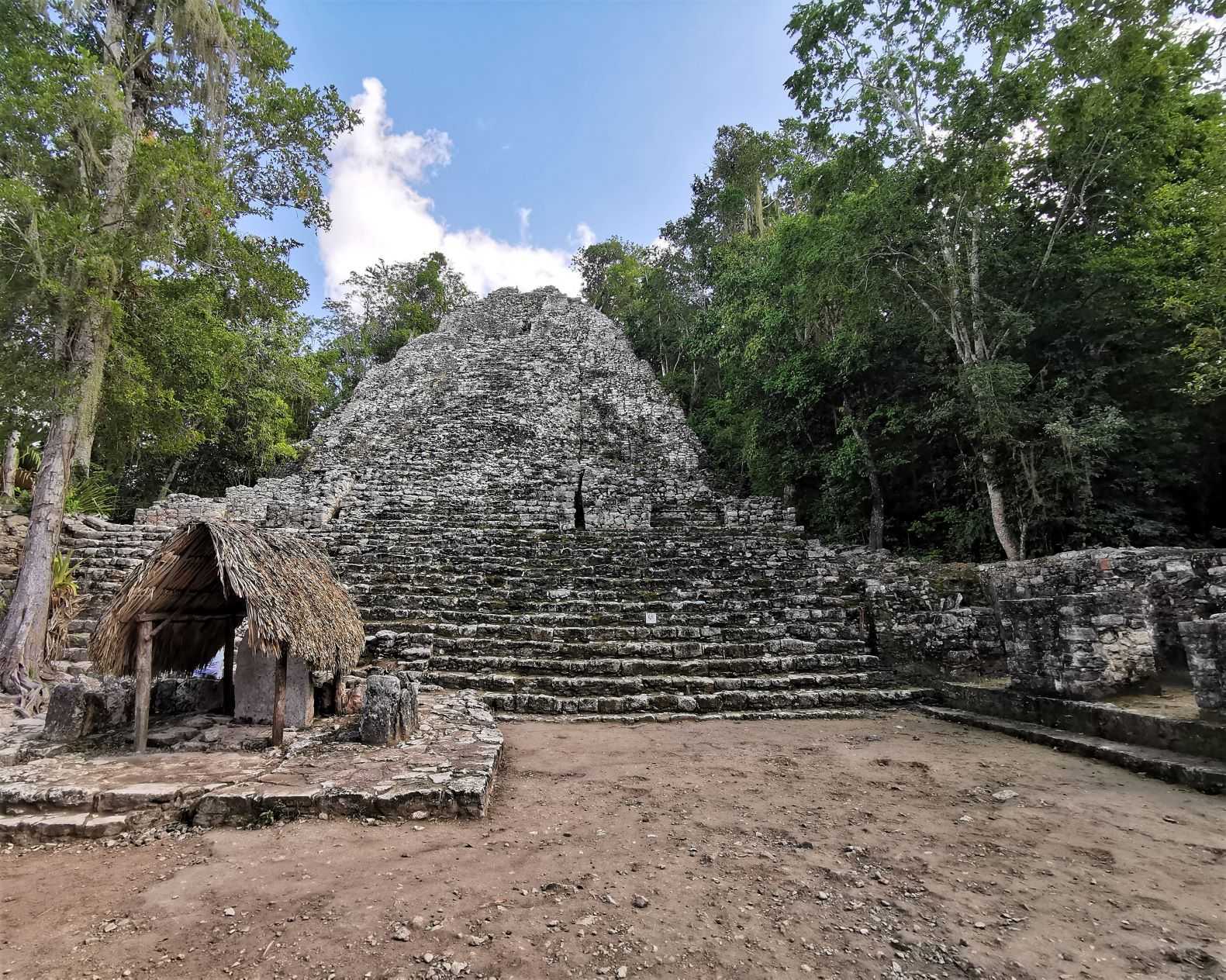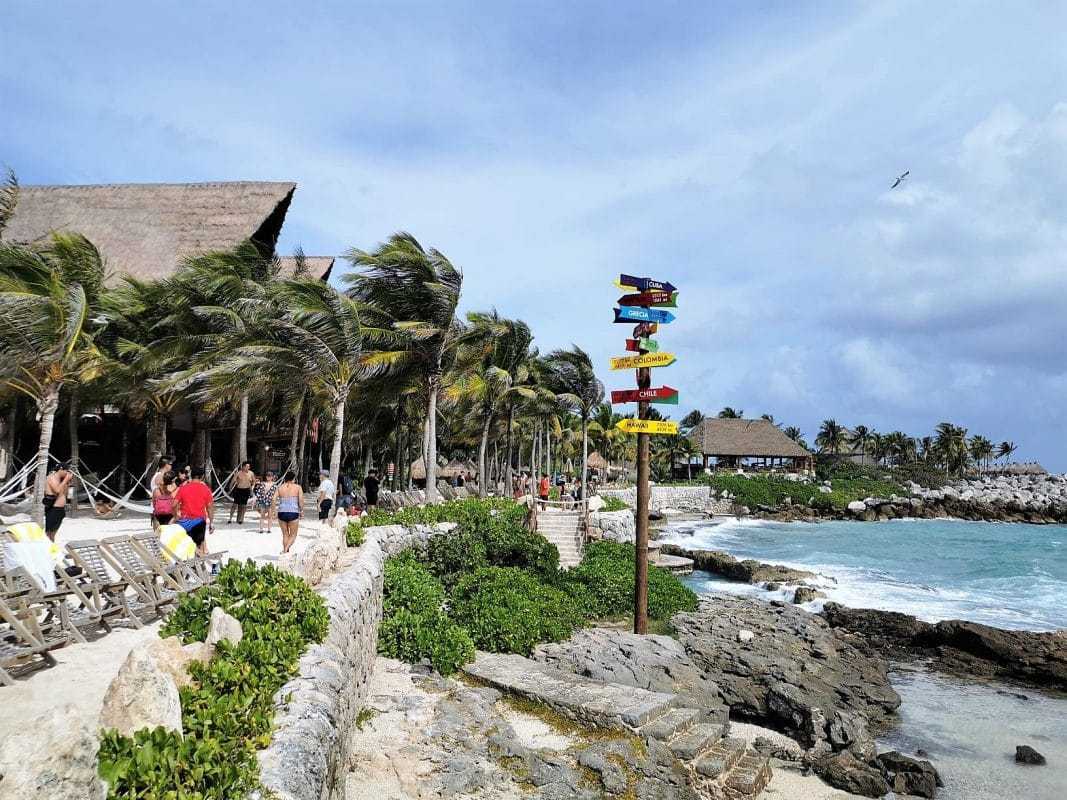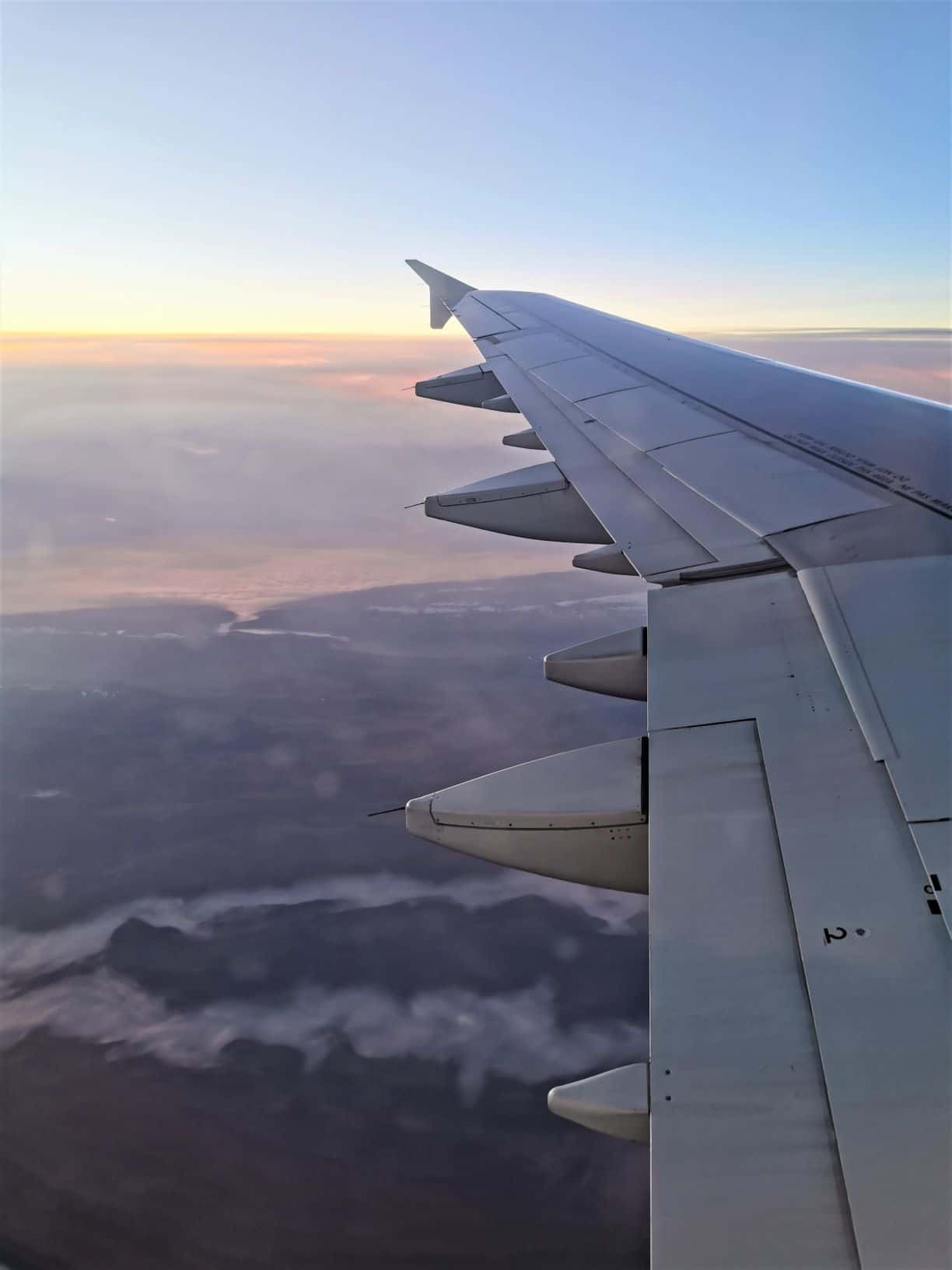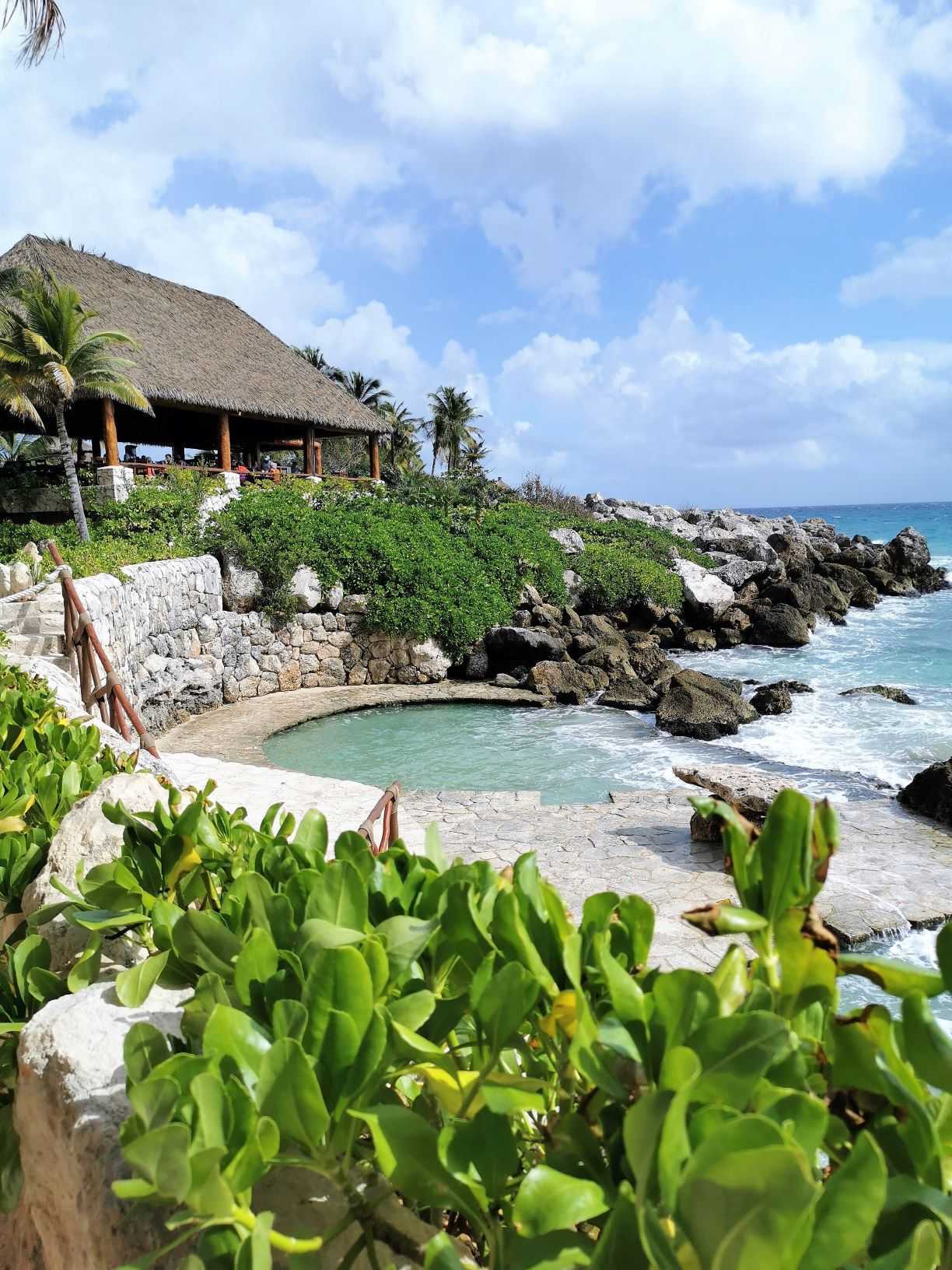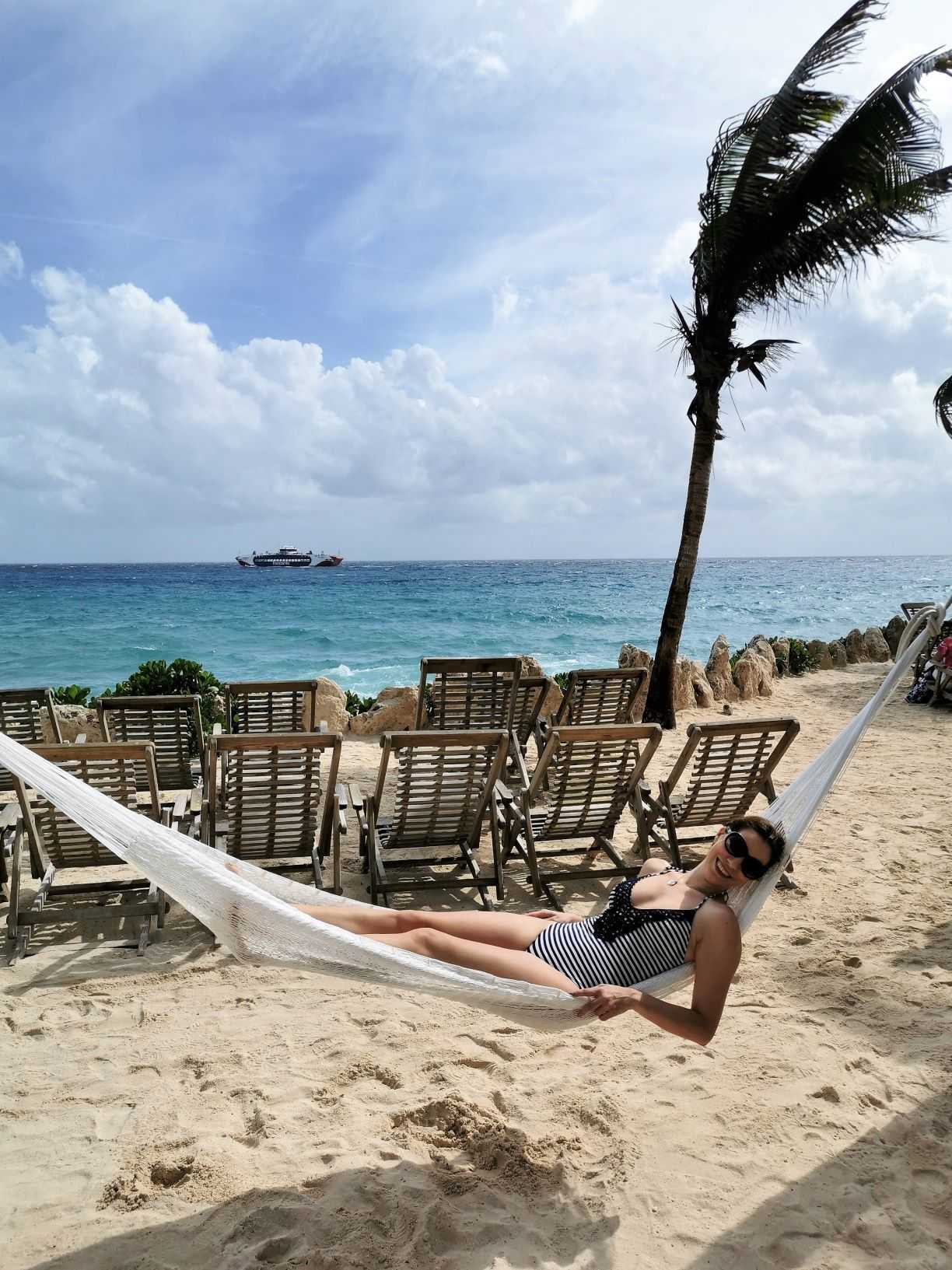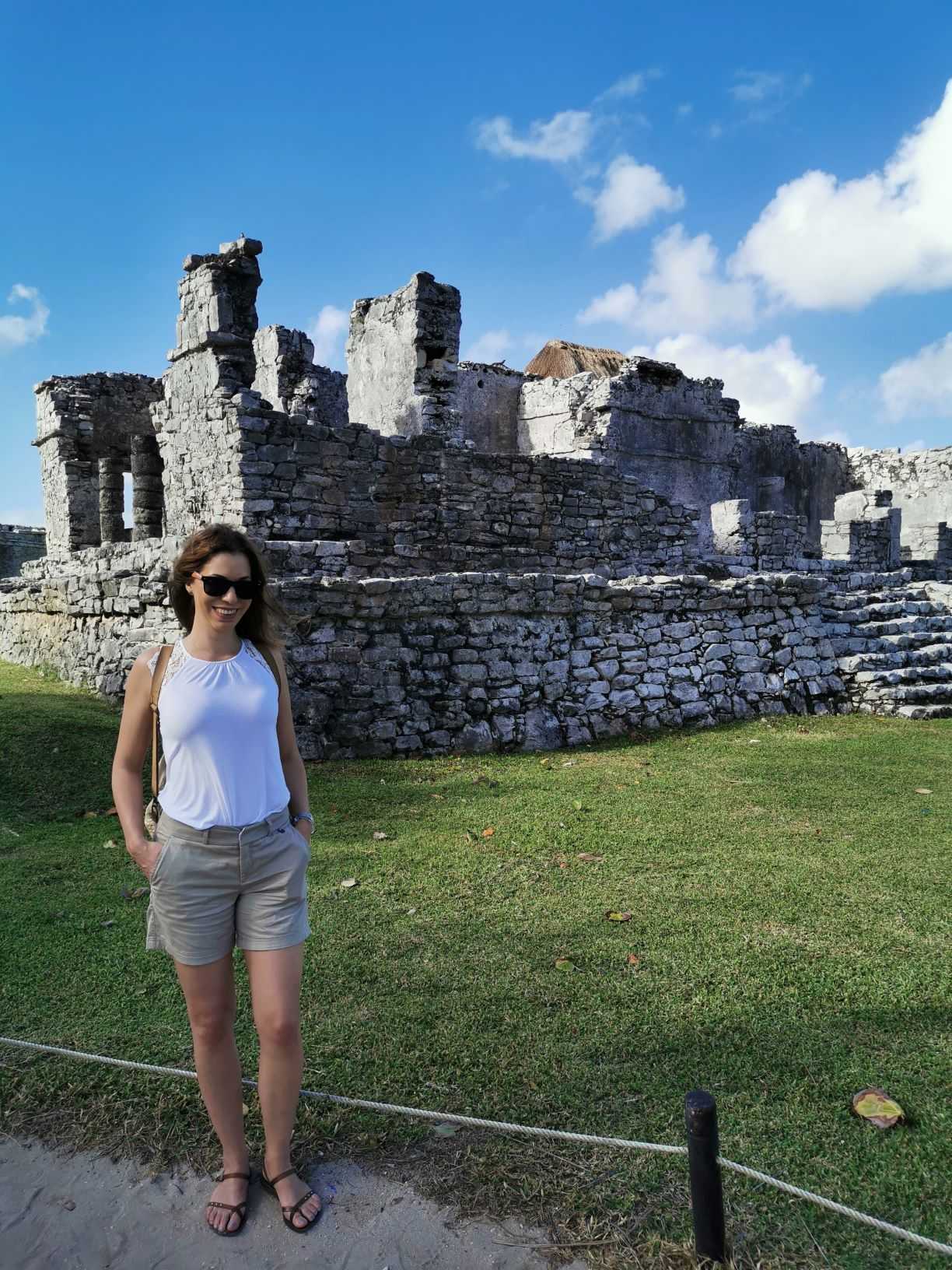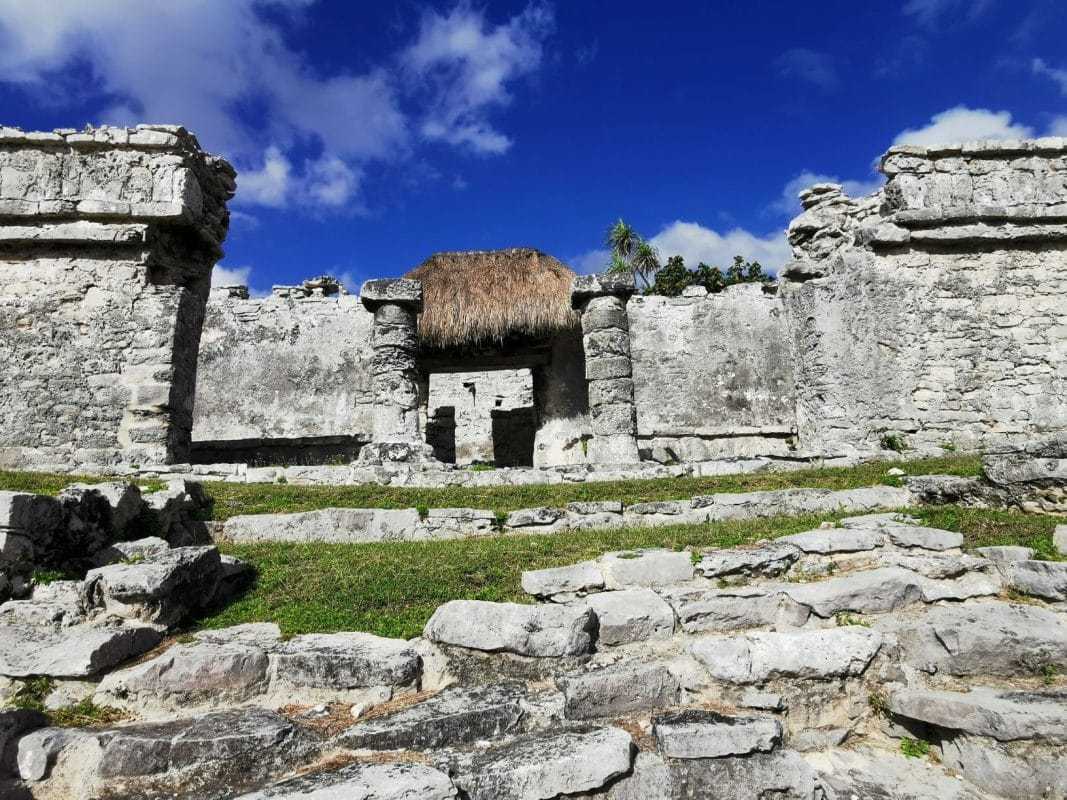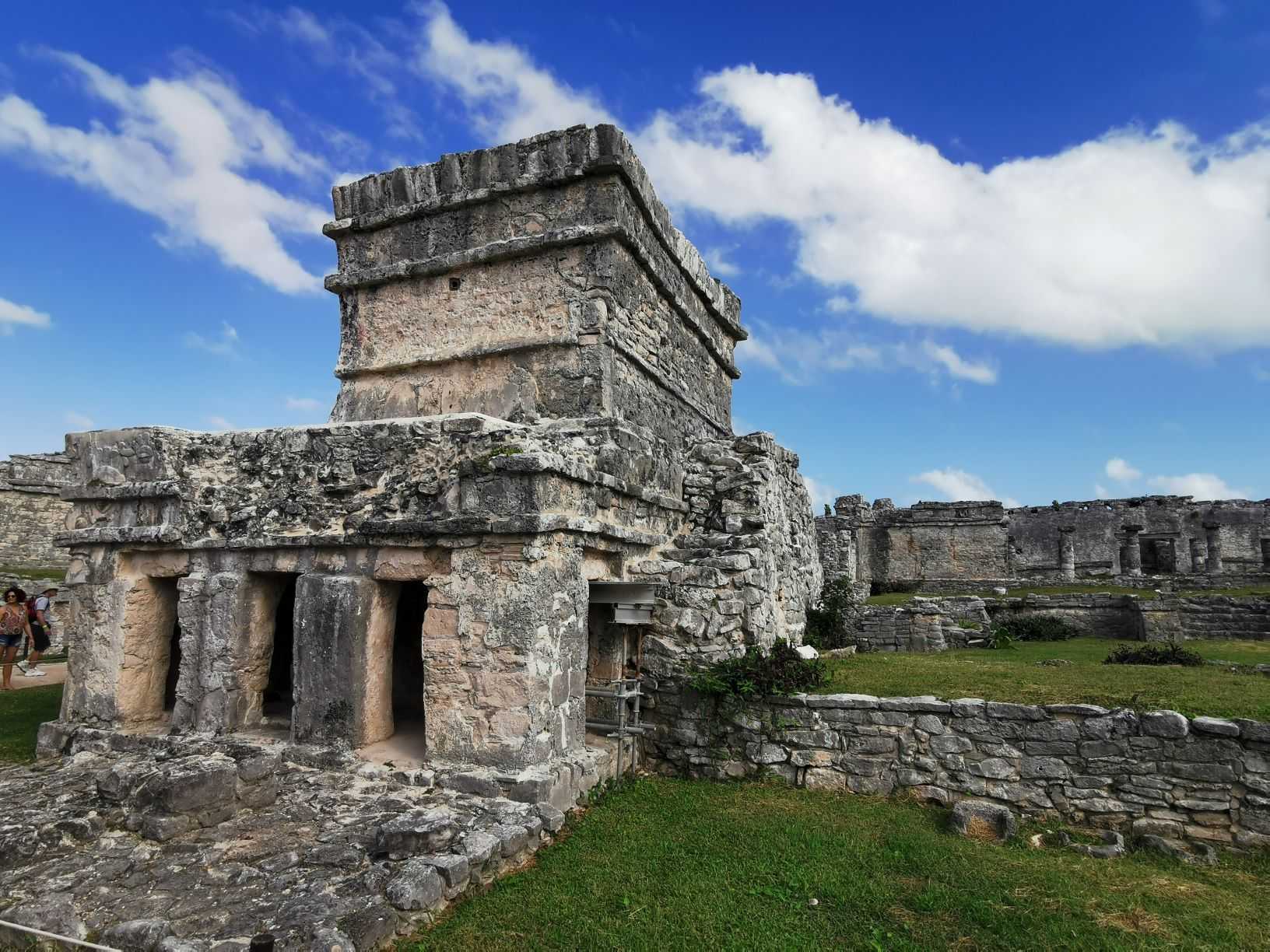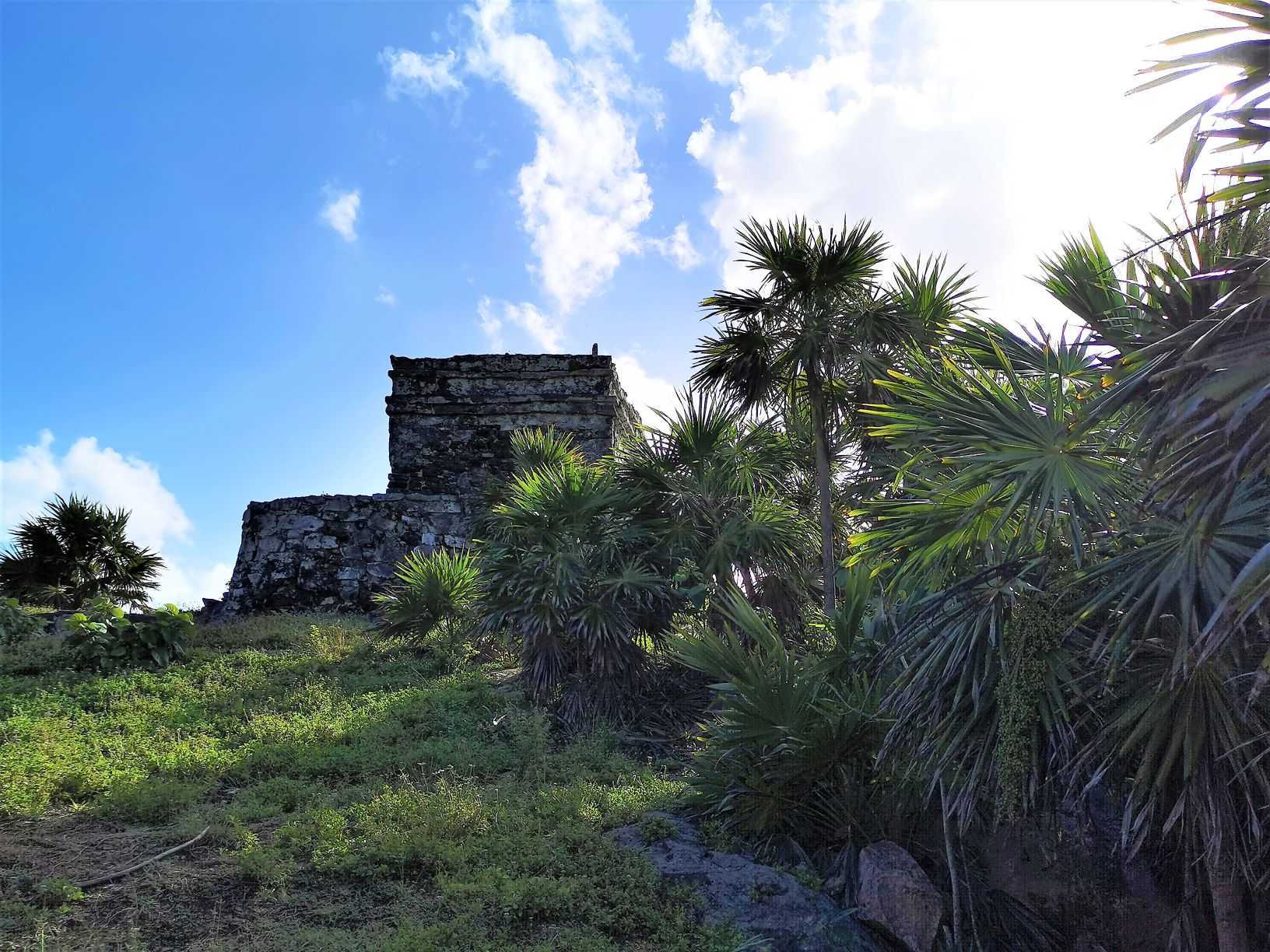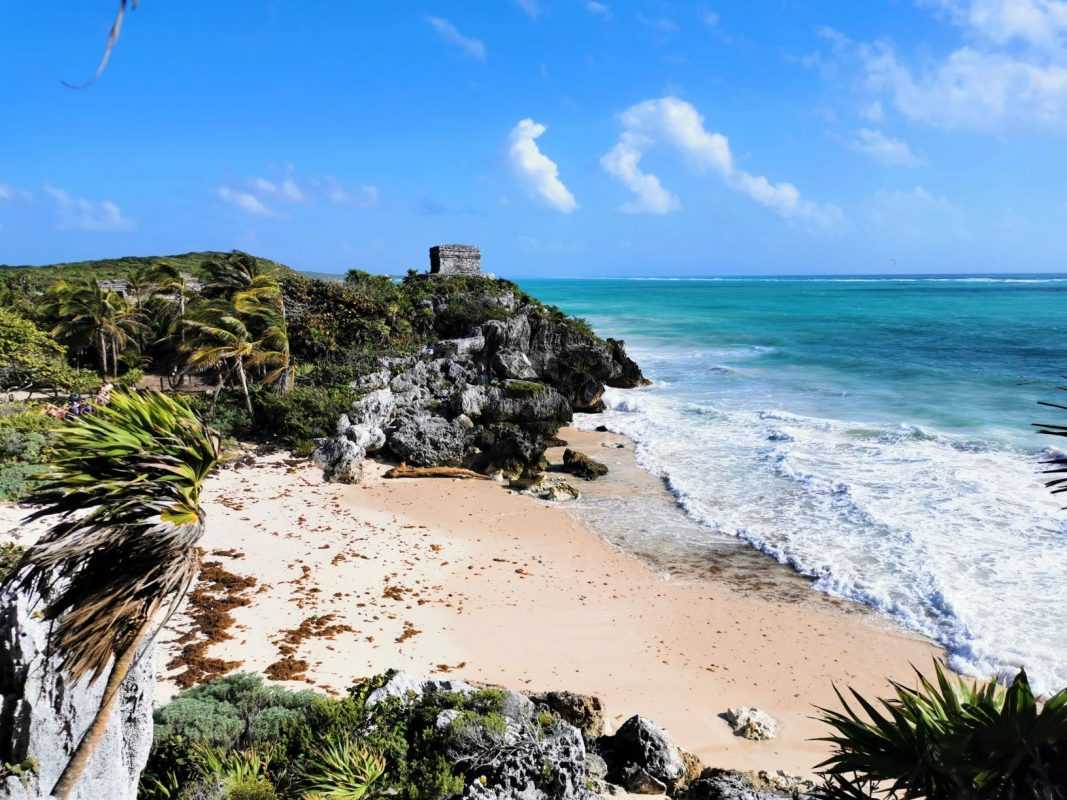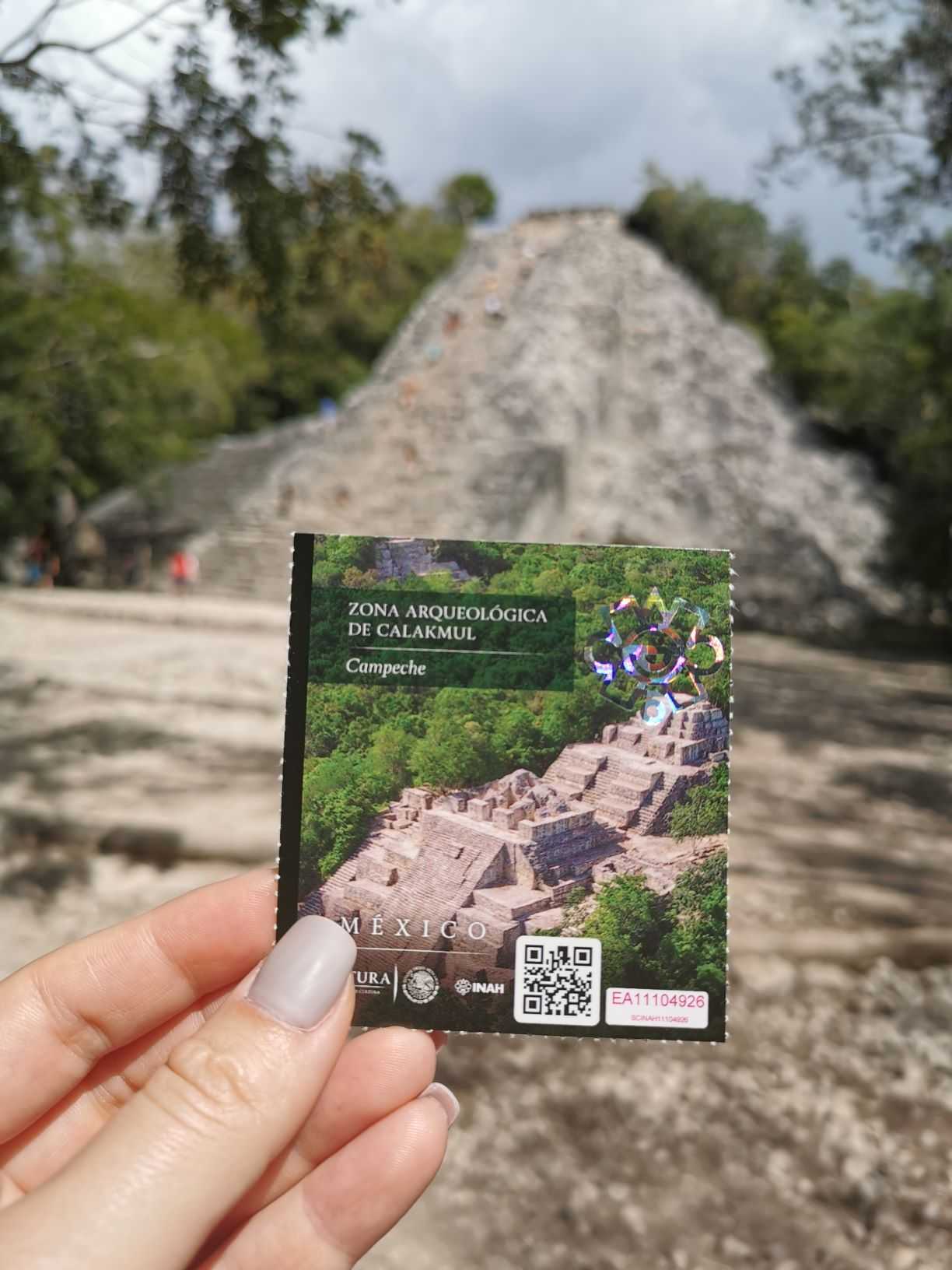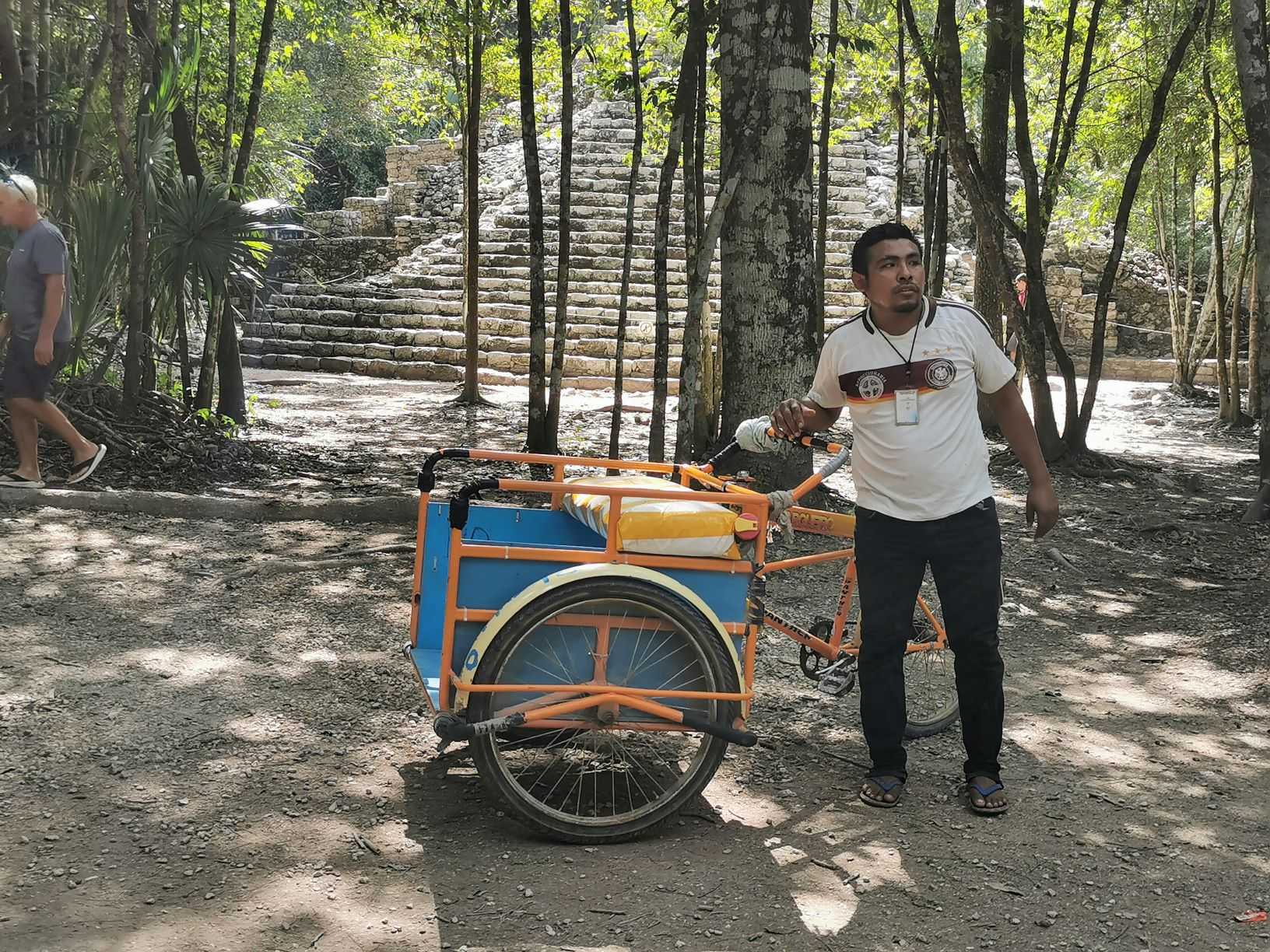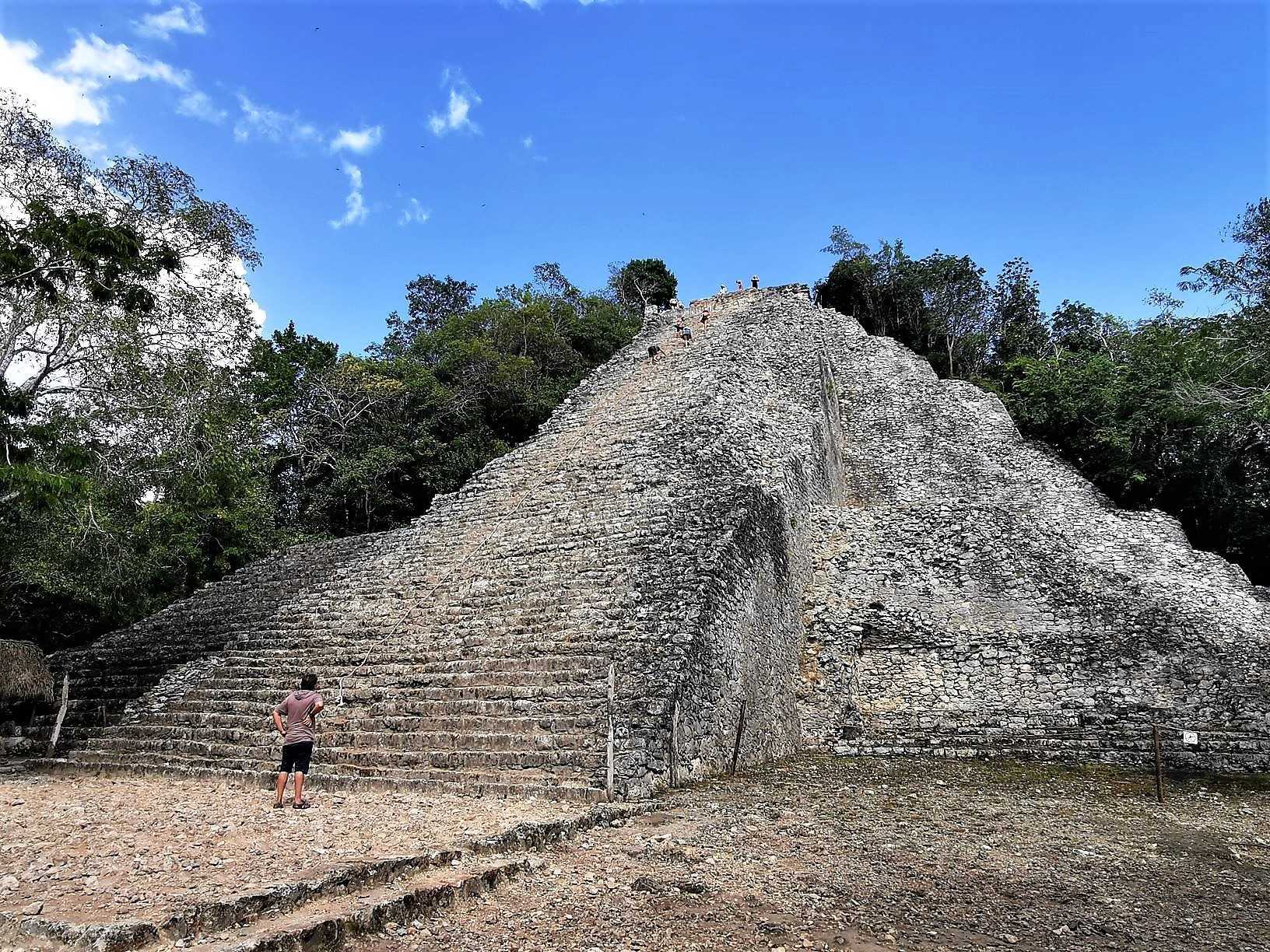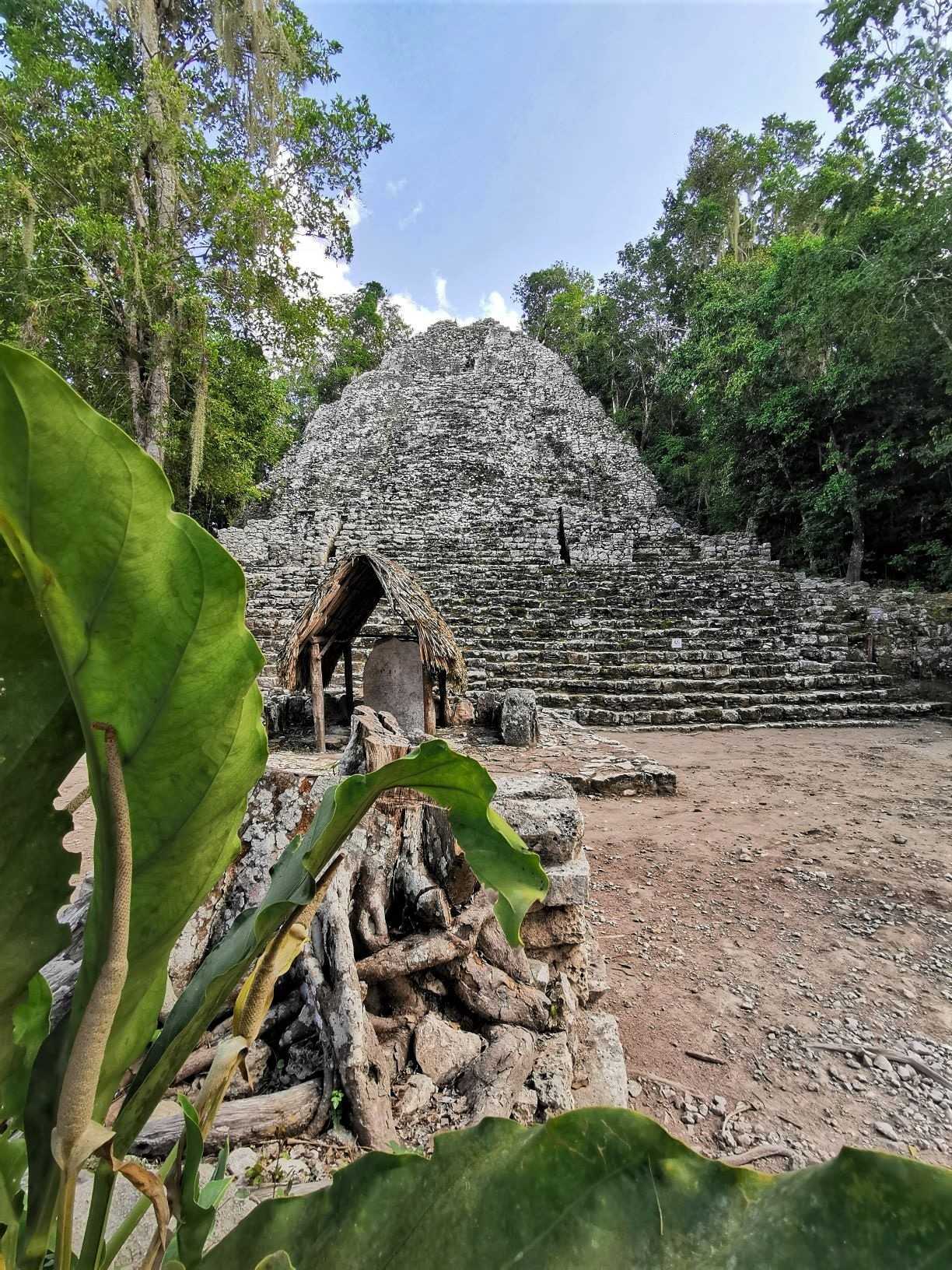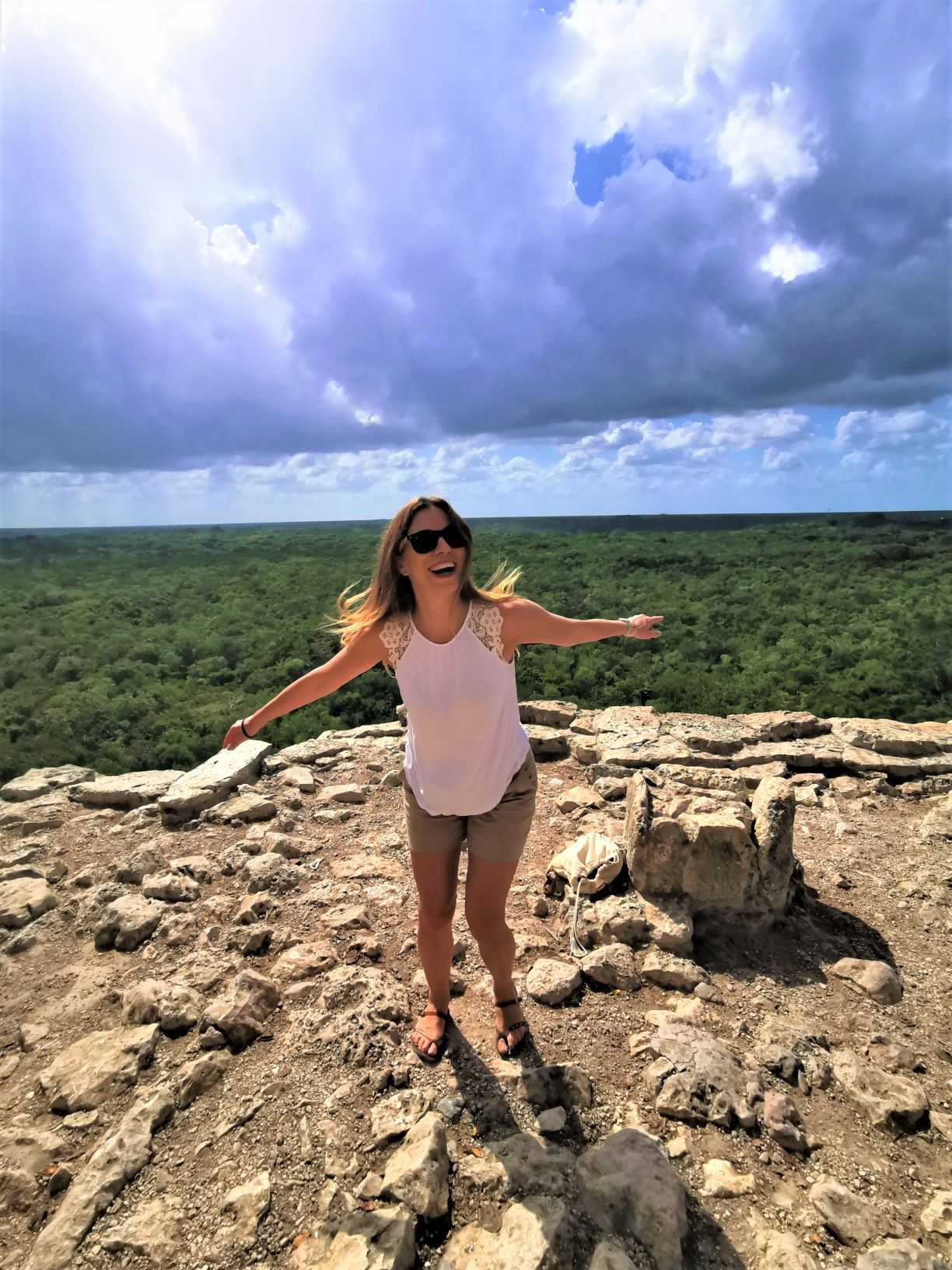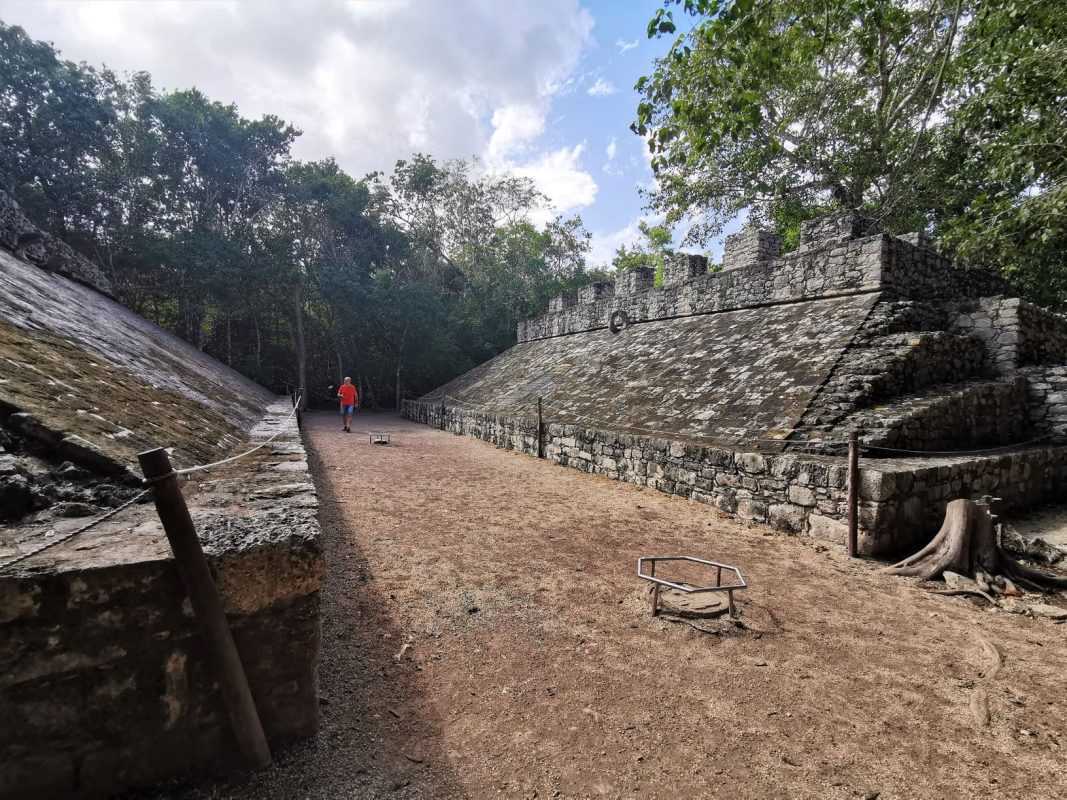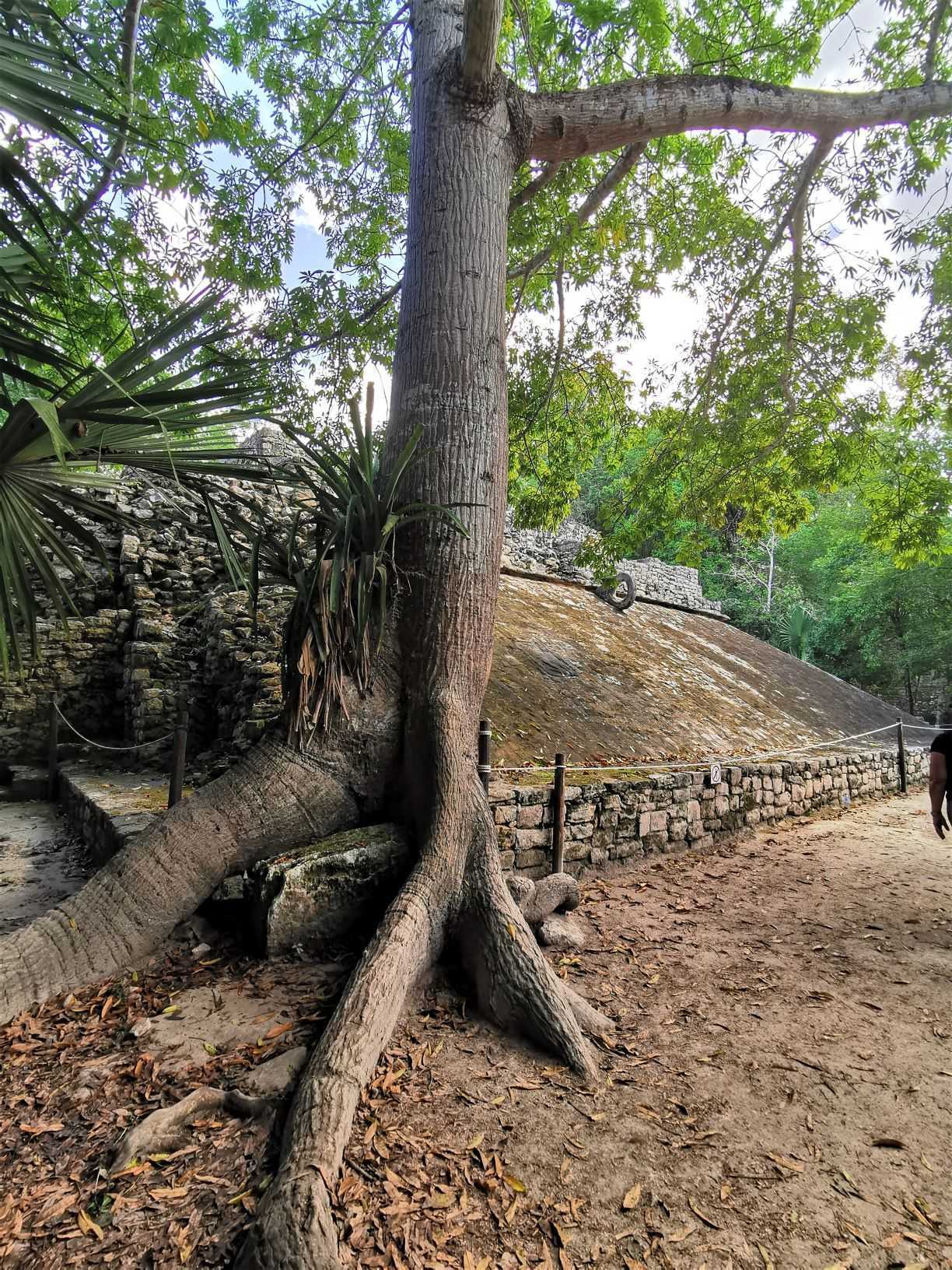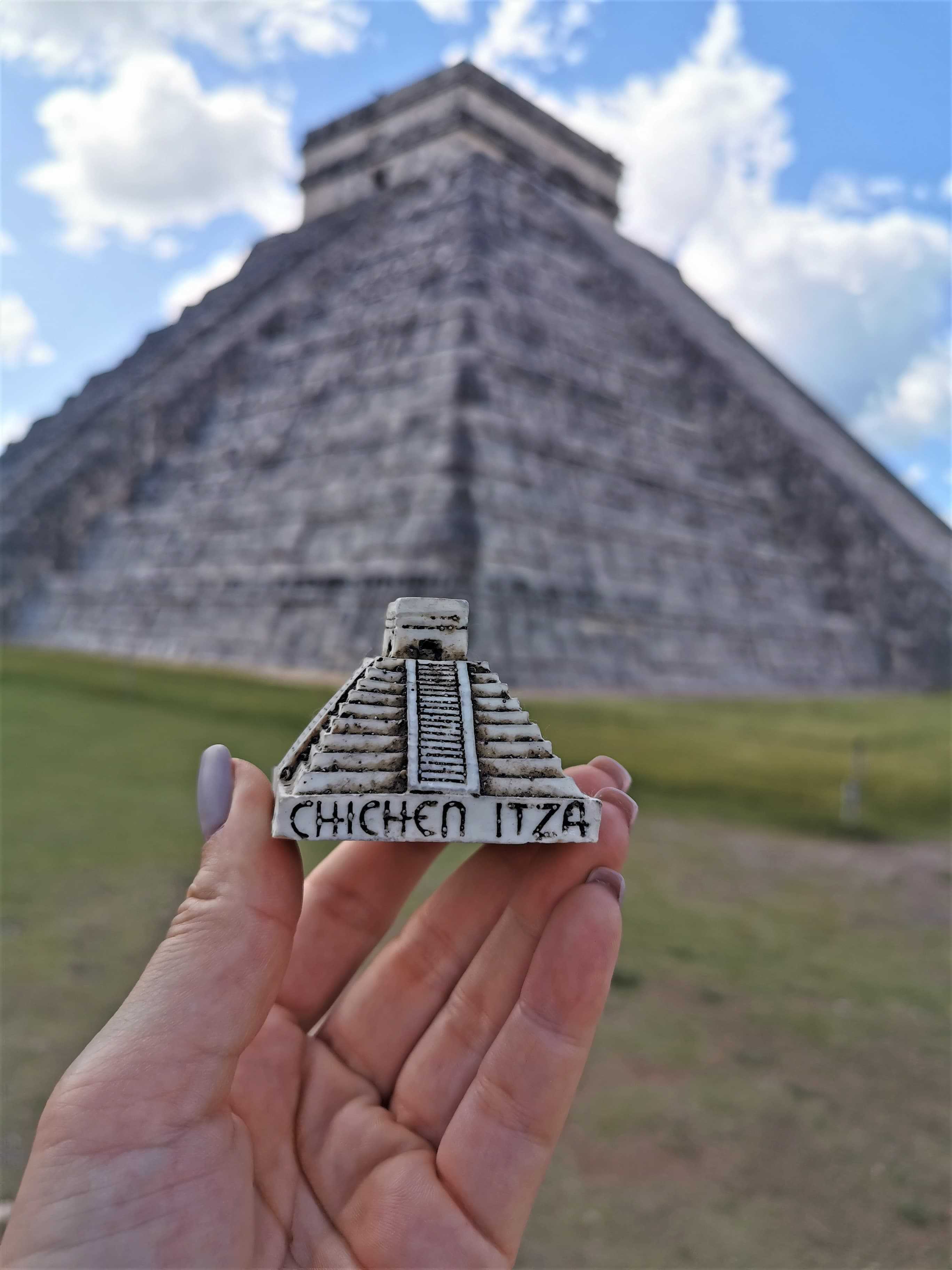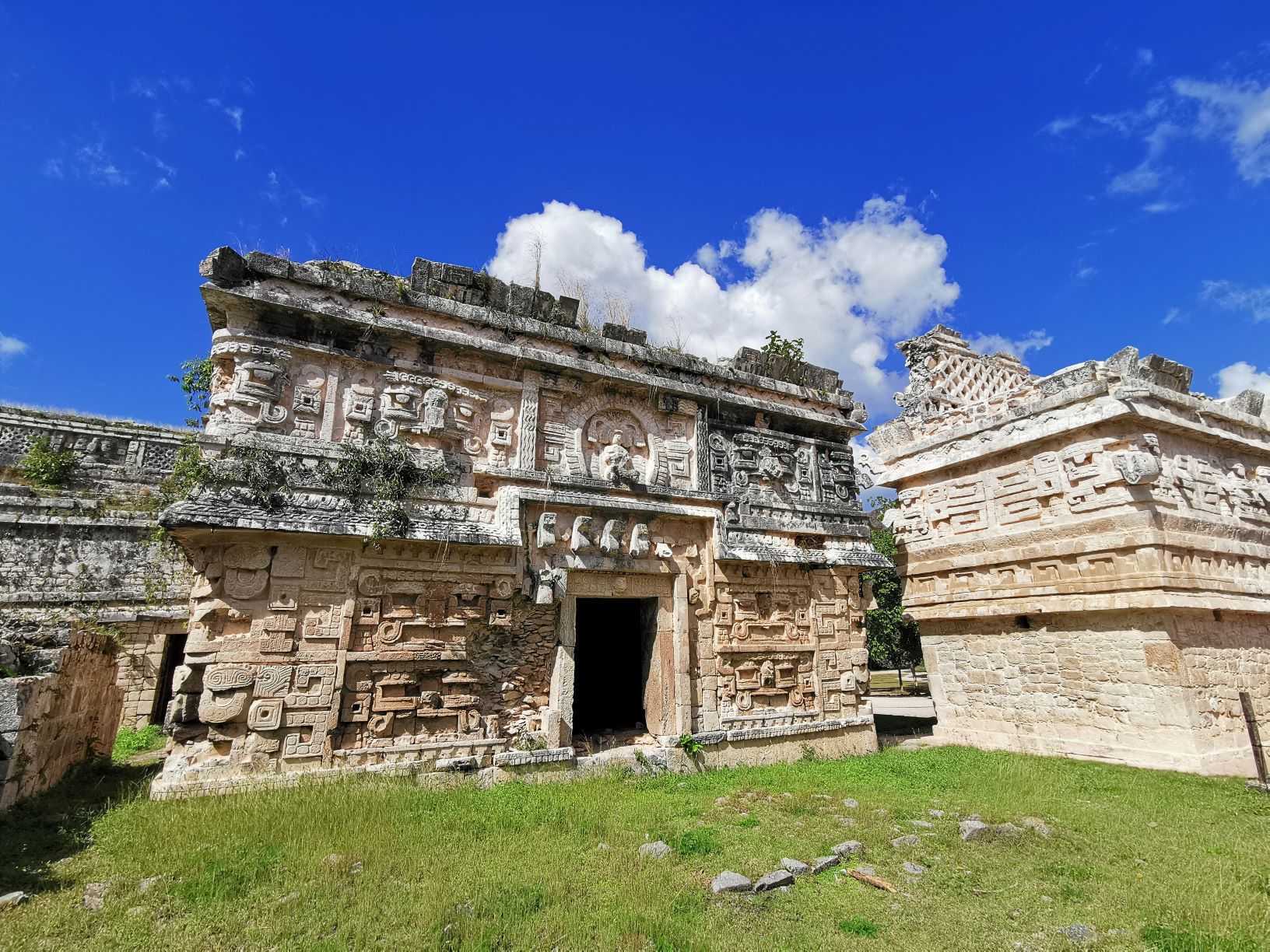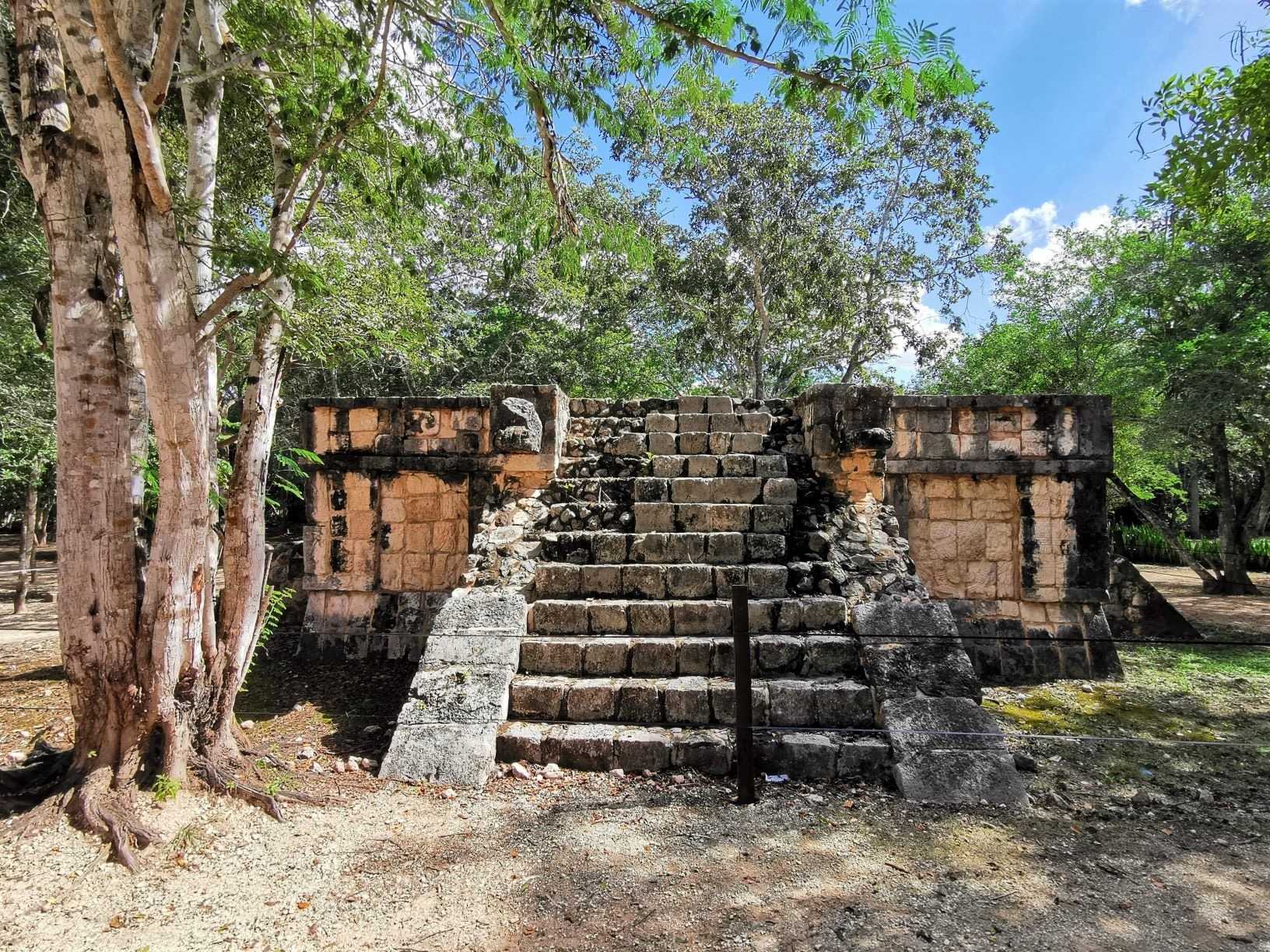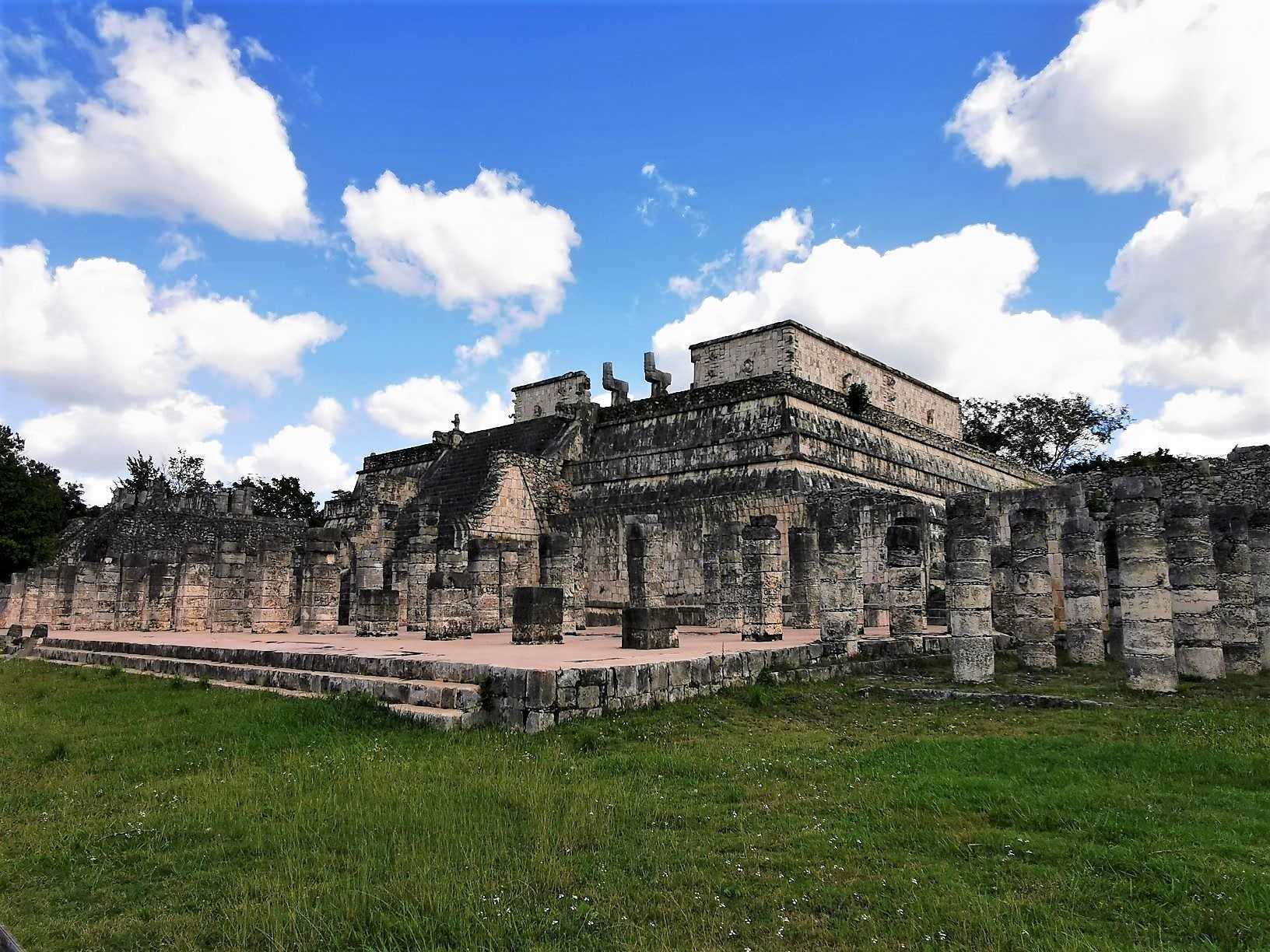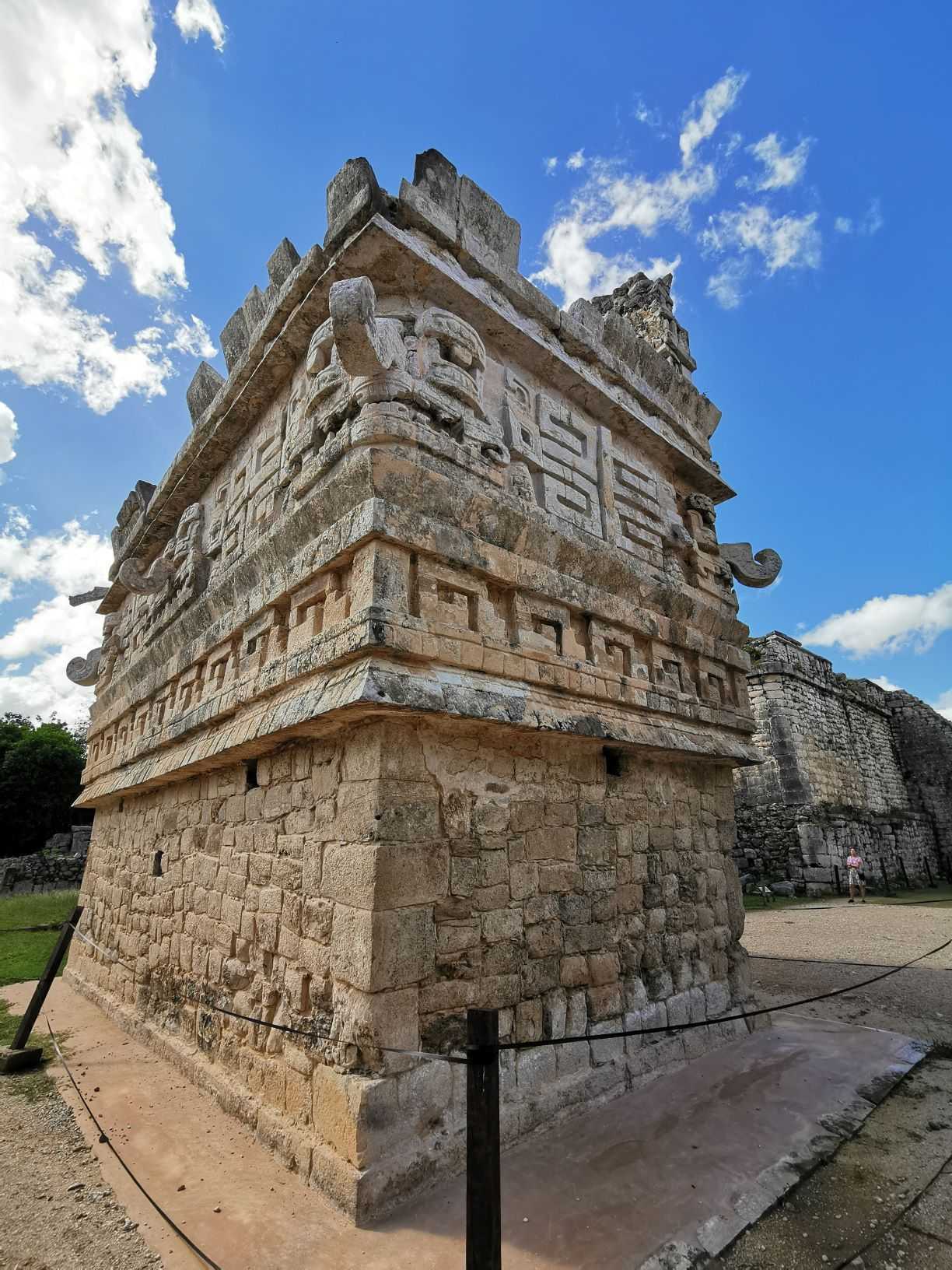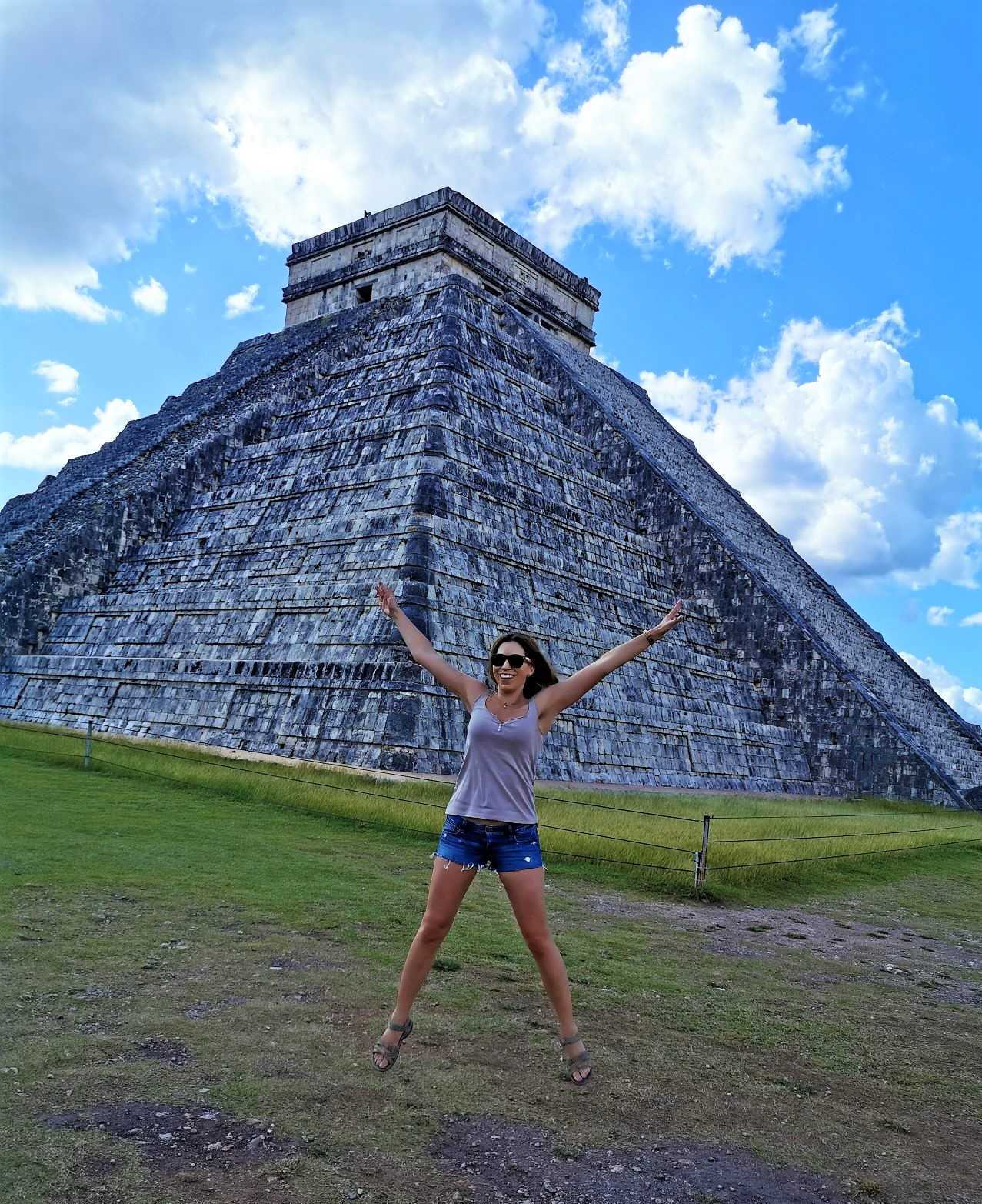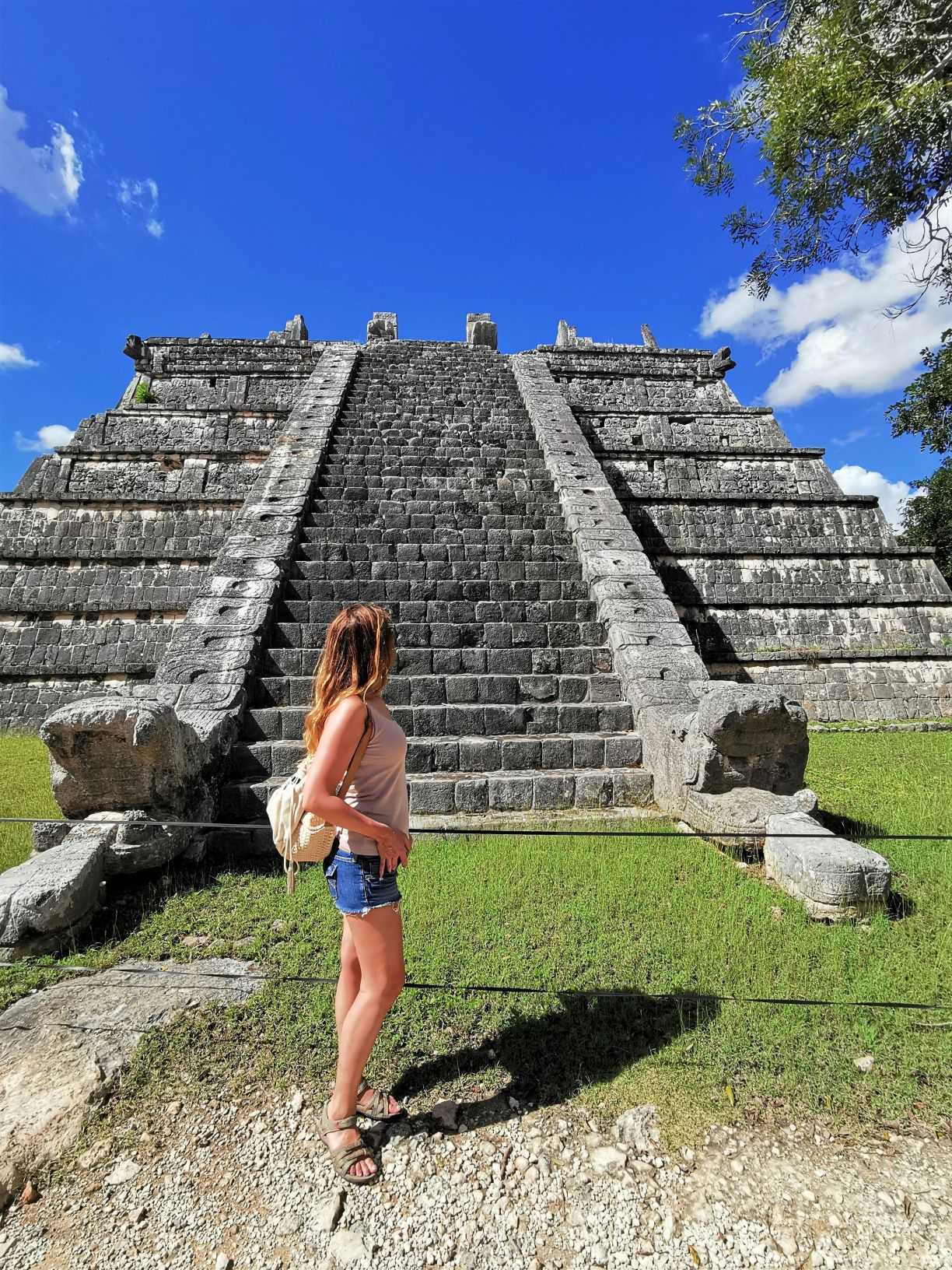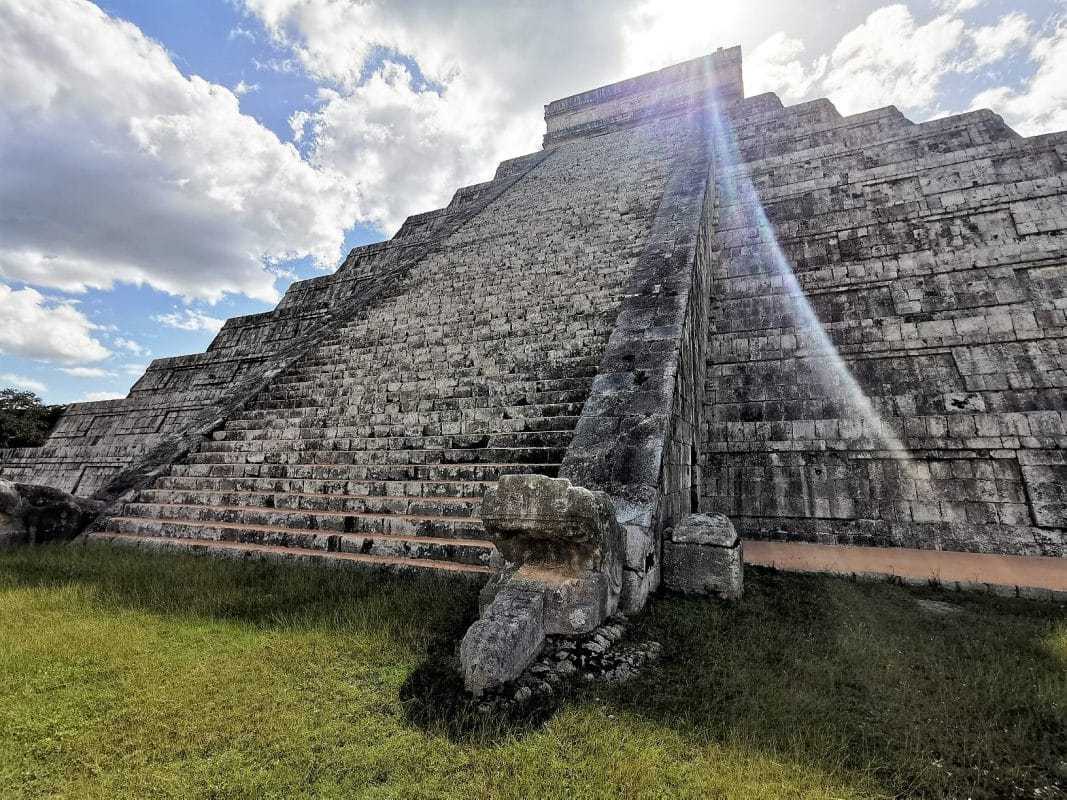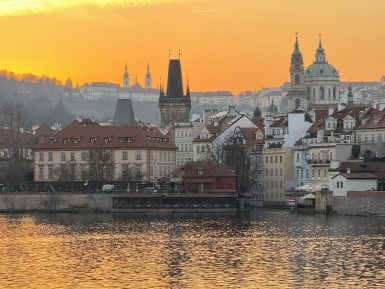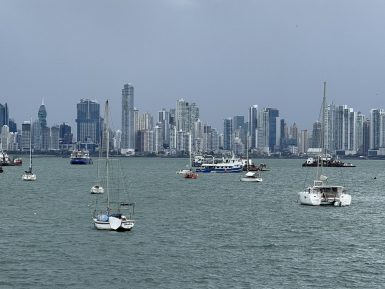After hearing Mexico’s name, most people think of tequila, spicy food, cacti, Mayan pyramids and palm-tree beaches and Acapulco. The list is not as far from reality as it seems at first, but the country has much more in store for visitors. In January, I spent two weeks in the Caribbean country, in a relatively active mode. During my journey, I flew 3 times, took a bus for nearly 1000 km and visited at least a dozen cities and I’m not talking about diving at the same time. One blog post wouldn’t be enough to tell you everything in as many details as I’d like, so there’ll be at least three separate posts about Mexico. Plus a little surprise for you, but everything in its own time. For the sake of visuality, I also created a map of which parts of the country I’ve been to. In this post, I’m going to show you the Yucatán Peninsula, where I looked for the Mayan civilization.
Going to Mexico wasn’t exactly smooth. I got on the plane with a cold, so the conditions weren’t ideal for a long flight. However, the absence of lunch on the transatlantic Air France flight made me pissed of more than the flu itself. I know somebody must be the last, but they started the service only four hours after takeoff. They already knew there was a problem because they asked the people on the line what they want to eat and then nothing happened for half an hour. Then excuse-moi, we’re out of lunch, but here’s a cream-poured and cooked vegetable box, have a good appetite. Being lactose intolerant, I indicated that I couldn’t eat this, and the stewardess spread her hands out that she couldn’t give me anything else, and they ran out of everything. So I got through the 11-hour flight with two buns and two glasses of champagne.
I’m just going to keep it down, why did the French couple sitting next to me had a proper lunch and not me when we were asked at the same time? The question is obviously rhetorical. After such a history, I do not expect to be contacted by Air France’s PR manager with a possible travel blogger collaboration. Though I’m not the only one who was not satisfied with the airline’s service.
Arriving in Playa del Carmen, luckily the warm sunshine and salty air quickly dried up my tears caused by the flight and even helped me quickly to get well. There’s a reason why I always say that nature and travel are always the best doctors. Although there was not much time for lying on the beach this time, the view of the white sand beach and palm trees was very remarkable. Although many people who had visited Mexico before me warned me to prepare for the seaweed and the smells that come with them on the beach, this time they had no trace. This is probably due to the not-so-warm but pleasant temperatures of 28-30 degrees in January.
The Mayan Triangle: Tulum, Coba, Chichen Itza
When you’re in Mexico, you have to visit at least one Mayan city, but if you get more in your time, it’s even better. The most famous Mayan pyramid in Mexico is undoubtedly Chichen Itza, but next to it there are at least a dozen more ancient ceremonial centers on the Yucatán Peninsula from which you can choose. I would like to state right that the information in the blog post is from our tour guides in Mexico and I tried to record what I heard from them as accurately as possible. I’m not a walking lexicon, and the goal isn’t to give you history class here.
People on the Yucatan Peninsula are known as the Mayans. In fact, they are not from Mexico, but are a group of people from now Honduras and Guatemala. They were named by an anthropologist as the Mayans. The Mayans have built an extremely advanced civilization in the Mesoamerican territory. They were a fan of mathematics, astronomy and arts. They knew the zero number long before it arrived in Europe from India. They used a 20-digit system and wrote with intricate hieroglyphics (glyphs), which only managed to be deciphered by a Russian scientist in the late 20th century. Three calendars were used together, of which thousands of years were predicted. Their calendar is much more accurate than the Gregory calendar, which is still known today.
Mayan culture and architecture can be divided into three great epochs: the preclassic era was between BC 2500 and AD 300, the classic era lasted AD 300-900 – when most Mayan cities were built – while the post’s classical Mayan era ended in 1519 with the arrival of the Spanish. There was never a unified Mayan empire. There were separate Maya cities, with at the head of kings who were at constant war with each other or formed an alliance to protect each other. Most of the Maya cities were completely depopulated by the end of the classical era (AD 900). It is not known why, but presumably it was not a mass extinction, although there are theories about epidemics. The Mayans probably moved their headquarters elsewhere due to drought, as there are no natural rivers on the Yucatán Peninsula and the farmland is only 20 cm thick above the karst layer. The weather and cenotes, in which the rainwater gathered, greatly determined where their cities should be built. It is wrong to assume that cenote caves would have been sites for Mayan burial sites and ritual killings, since the Mayans were not fools to poison their own drinking water.
The buildings we call maya cities today were not inhabited by residents. These cities were ceremonial centers and served ritual purposes. The Mayans’ apartment buildings were built of wood, outside the ceremonial center, and today – presumably wooden buildings – have been completely destroyed. 90% of the Mayan pyramids were not burial places, unlike Egypt (except for what I saw in Chichen Itza, the tomb of the high priest) – but in the shrine at the top, sacrifices were made to their gods. More gods were served by the Maya, we can talk about a polytheistic religion. Because of this, when the Spaniards arrived in 1521 and the Catholic religion was forced on them, they had no problem honoring one more god or not.
On the Yucatan Peninsula, I visited to three Mayan cities during my journey. I know it’s not supposed to be insatiable, but I feel a little bit disappointed that I didn’t get to Ek Balam. Given that this pyramid and city were only renovated in 1997, not many people know about it. There are hardly any tourists there and based on pictures, the place looks amazing, it’s worth searching for.
Tulum
Literally, it is the city of the rising sun, Mexico’s third most visited historical landmark. The Mayans’ only city built on a direct coastline that once played an important role in trade. It is said that when the Spanish saw the tower standing on the steep cliff, they wrote to King Charles V of Spain that it was much larger than the one in Seville. Although time has obviously left a mark on the building, such allegations must be treated with doubts. It was customary at those times to bring good news to get more money for new expeditions. However, Tulum is really nice and many buildings have survived in the frequent city surrounded by a stone wall. Unfortunately, the Church of Frescoes along the coast can no longer be seen from the inside, even though the Mayan church art started from here and beautiful frescos can be seen inside.
When we were at Tulum, due to strong winds, the beach was closed, but in normal weather, you can bathe in the ruins in the Caribbean foams. So it is worth taking a swimsuit with you. My practical advice is to arrive early here because Tulum is located in a small area and there are plenty of visitors. Unfortunately, the environment has also suffered damage. The former jungle and trees have now been completely wiped out around the buildings
Cobá
Built in the classical era, this Mayan city was the largest on the Yucatán Peninsula until Chichen Itza started flourishing. An estimated 70,000 to 90,000 people lived here. Cobá was built in petene style, typical of the Mayan buildings that you can see in Guatemala. Presumably, the new architectural style was transferred here through royal marriage, although many of these writings were unfortunately destroyed.
With the arrival of the Spanish and Herman Cortez in 1521, a missionary priest, a Diego De Landa, also moved his headquarters to Mexico. He was given the task of converting the indigenous peoples who lived here. He has done a pretty thorough job. He burned all the Maya codes, with four exceptions that survived and can be found in the whole world. Thanks to him, very little is known about this ancient civilization. Of course, later, the Spaniards realized that it would be nice to get to know the people who live here if they were to stay in the country permanently. Although they did not benefit much from the conquest of the Yucatán Peninsula, because there are no ores or rich farmlands here. In the spirit of reconciliation, scribes were sent to the tribes to tell their stories again once the codes had been destroyed. For this reason, Spanish writings about the Mayans cannot be called authentic, as they were written under duress and distorted here and there in order the story should look better in the mother country.
Cobá is the perfect opposite of Tulum: there are few tourists here but are a lot of green spaces. Most of the remaining 7,000 buildings are inaccessible to visitors. The 42-meter Nohoch Mul pyramid is deep in the forest – the tallest in the Mayan world! – and the easiest way to get there is by bike. Even if you are scared of heights, it is worth climbing to the top of the pyramid, because the view from above is amazing. As far as the eye can see, there are green trees and jungles everywhere.
On the way back, let’s stop at the former building where the ball games were played. Maya people played in teams of 7-7 with a rubber ball of at least 3 kilos. According to the rules, they could only touch the ball with elbows, hips and knees, and the ball should be kicked a caravel. Seeing that this hole was about the height of a basketball plank, it couldn’t be an easy thing to achieve.
Cruel games: ball games were not for entertainment, they were arranged in honor of Sun God. The ball itself symbolized the sun, that’s why it was huge. Initially, there were stands at the ball games, as you can see in Cobá. Later, next to the arena, there were only the two fields, with a sanctuary at the top (Chichen Itza looks like this), from where priests supervised the observance of the rules of the game. The game went to blood, and the winning team was beheaded (according to other sources, the lose teamr, but this is probably not true). Before you think that the poorest in society must have been sacrificed to Sun God, it’s not true. The members of the nobility formed the troops, who were honored with a glorious death.
For the Mayans, the sacred ceiba tree represented the world, which consists of three levels. Before someone enters the heaven, they have to go through nine trials in the hell pits. If someone was sacrificed, he immediately went to heaven and didn’t have to go through all the way there. For this reason, the members of the nobility purchased their spiritual salvation through games, similar to medieval farewell tickets.
Chichen Itza
This is the most significant and well-known ancient city of all in Mexico. It had two golden ages, which is very rare in the history of Mayan cities, most of them depopulated at the end of the classical era. Chichen Itza started flourishing among other cities due to salt because commercial roads passed here and made it an important publican’s center and accommodation. The former Mayan ceremonial center is in a vast area and has unparalleled beauty. It is one of the seven wonders of the New World and a UNESCO World Heritage Site for a reason.
In Chichen Itza, you can see classic and post-classical Maya buildings, all of which, even if I could list – obviously with Google’s help – but I don’t want to. The main attraction is undoubtedly the Kukulkan, the feathered snake god pyramid, which is also the world’s largest Mayan calendar. On each side of the symmetrical building, 91-91 steps lead to the roof, which, together with the last step leading to the shrine, gives out exactly 365 days of the year. The pyramid temple has nine terraces, which, like the roots of the ceiba tree, symbolizes nine trials of the underworld.
The Kukulkan pyramid is 55×55 meters in size and was built on an older, smaller pyramid, which was only found in the 20th century during an excavation. The inner pyramid contains the famous Jaguar throne, surrounded by red frescoes designed to illustrate the combative nature and battles of the Tolts. Unfortunately, today you can’t go into the inner pyramid or the top of the 27-meter Kukulkan.
Although Chichen Itza survived the other Mayan cities, after 1300 this place was also depopulated. However, its ritual significance has remained to this day. Due to the shadow cast by the rays of the rising sun, it seems as if a snake is creeping out of the temple, complete with a stone tail and stone head section carved at the bottom of the pyramid. During the solstice, up to 15,000 to 20,000 people gather in front of the Kukulcan pyramid to see this miracle.
If you don’t want to wait for the miracle, I have a quick suggestion. Let’s stop in front of the main entrance to the pyramid and start clapping out loud. The applause echoes the Mayan’s holy bird, the quetzal’s voice, which comes back to us. And the Quetzal is the national symbol of Guatemala. And with that, we’re back in the Mayan motherland, the place where the Mayans set out thousands of years ago to conquer Meso America and the Yucatan Peninsula.
***
In my next blog post about Mexico, I take you to the legendary world of the cenote caves. In addition to unparalleled underwater footage, I also show you where you can meet flamingos in Mexico.


